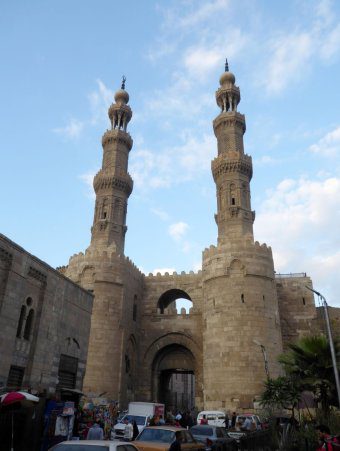
Building the Islamic Metropolis: Cairo under the Mamluks
Massachusetts Institute of Technology Nasser Rabbat
April 7, 2022 · 4:30 pm—6:00 pm · 219 Aaron Burr Hall and Zoom
Department of Art & Archaeology; Department of Near Eastern Studies; and the Program in Medieval Studies

Cairo is a city with many superlative epithets. To the Egyptians, it is Misr (Egypt), Umm al-Dunya (Mother of the World), and the “City of Thousand Minarets,” for its unparalleled concentration of mosques. To Ibn Khaldun, who first laid eye on it in 1382, it was “the metropolis of the world, orchard of the universe, hive of nations, iwan of Islam, and throne of royalty.” Founded as al-Fustat in 634 at the strategic head of the Nile Delta as the capital of Islamic Egypt, it grew for the next three centuries by annexing its northern satellites. In 969, the Fatimids established the seat of their caliphate north of the conglomerate, and dubbed it the Victorious (al-Qahira, or Cairo), which eventually absorbed al-Fustat and erased its name. But the city’s most spectacular age was the Mamluk period (1250-1517), when it became the uncontested center of a resurgent Islam and acquired a character that defined the Islamic metropolis for centuries to come.
The lecture tells the story of Mamluk Cairo: how it adapted to the new and idiosyncratic regime, how it appropriated and modified the urban layers of earlier dynasties, and how it deployed architecture to incorporate and dominate its urban surroundings. Delving into the “why” side of things, the lecture ties the urban and architectural developments to the militarization of the state under the Mamluks, the evolution of an intricate patronage system that governed their interaction with various social classes, and the two-faced role of the waqf endowment process that supported the urban growth while diverting some public funds to the descendants of this one-generational imported aristocracy.
The end result, however, was an impressive architectural repertoire consisting of more than 2000 monuments built in the span of 250 years that vied with each other to command the best location with maximum street exposure and high visibility. All was mobilized in the service of a vigorous urbanity that strove to accommodate the cosmopolitan population drawn to the city from everywhere while maintaining the delicate balance between the Mamluk caste of outsiders and the citizens in their capital.
In-person attendance is limited to PU ID holders, who should register in advance. Members of the public are welcome to register for Zoom attendance.















